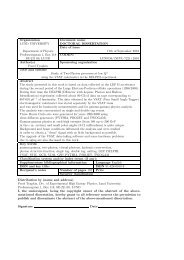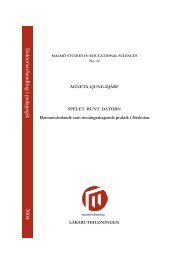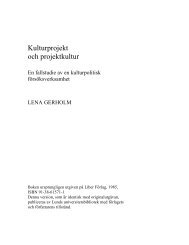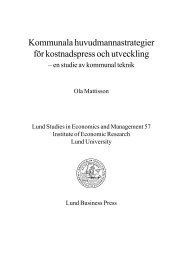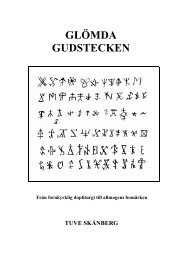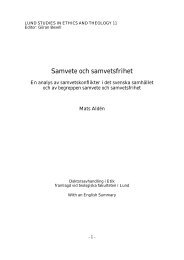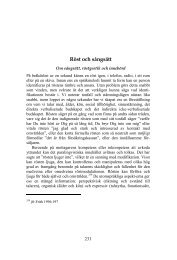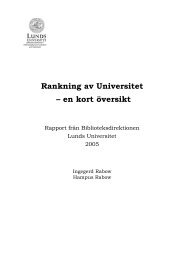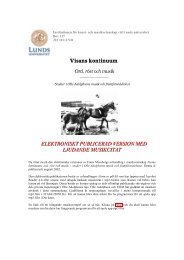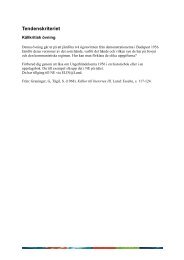Hyperpolarized Nuclei for NMR Imaging and Spectroscopy - Lunds ...
Hyperpolarized Nuclei for NMR Imaging and Spectroscopy - Lunds ...
Hyperpolarized Nuclei for NMR Imaging and Spectroscopy - Lunds ...
You also want an ePaper? Increase the reach of your titles
YUMPU automatically turns print PDFs into web optimized ePapers that Google loves.
3.8.1 The alveolar diffusion model<br />
The calculations were based on the diffusion of 129 Xe gas from the alveolar<br />
space to the pulmonary capillaries in a single-alveolus model. The model<br />
defined three compartments: the alveolar gas space, the lung tissue, <strong>and</strong> the<br />
capillary blood surrounding the alveolus (Figure 9a). Fick’s laws of diffusion<br />
(Fick 1855, Dowse et al. 2000) were used to describe the transport of 129 Xe<br />
within the tissue <strong>and</strong> capillary. A simple relation was derived, from which<br />
the total thickness L (= L t + L b) of the respiratory membrane could be calculated<br />
from the measured uptake time constant τ 1:<br />
34<br />
L ≈ D<br />
π<br />
τ1<br />
. [25]<br />
2<br />
Here, D is the diffusion constant <strong>for</strong> Xe (∼1·10 –9 m 2 s –1 in plasma<br />
(Wolber et al. 2000c)). From this model, it could be shown that the amplitudes<br />
of the spectral peaks corresponding to tissue <strong>and</strong> capillary compartments,<br />
respectively, were characterized by an exponential increase during the<br />
early phase, followed by a linear increase with time (Figure 9b). It was further<br />
demonstrated that the slope <strong>and</strong> intercept parameters could be used <strong>for</strong><br />
calculating several physiological parameters (see section 3.8.2).<br />
a Lt Lc b<br />
blood<br />
without Xe<br />
r a<br />
gas tissue capillary<br />
F<br />
Signal<br />
Sa (0)<br />
Sa0<br />
St0<br />
Sb0<br />
slope St1<br />
slope Sb1<br />
Alveolar gas signal<br />
Tissue signal<br />
Blood signal<br />
0 0.1 0.2 0.3 0.4 0.5<br />
Time (s)<br />
Figure 9. a) The single-alveolus diffusion model. The radius of the alveolar gas<br />
space is denoted by r a <strong>and</strong> the thickness of the tissue <strong>and</strong> capillary compartments<br />
by L t <strong>and</strong> L c, respectively. F is the blood flow passing the alveolar<br />
unit. b) Simulations of gas, tissue, <strong>and</strong> blood (RBC) 129 Xe signals<br />
during the diffusion from alveolus to pulmonary capillaries.



